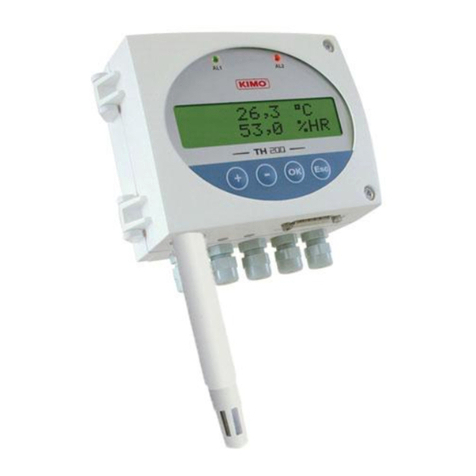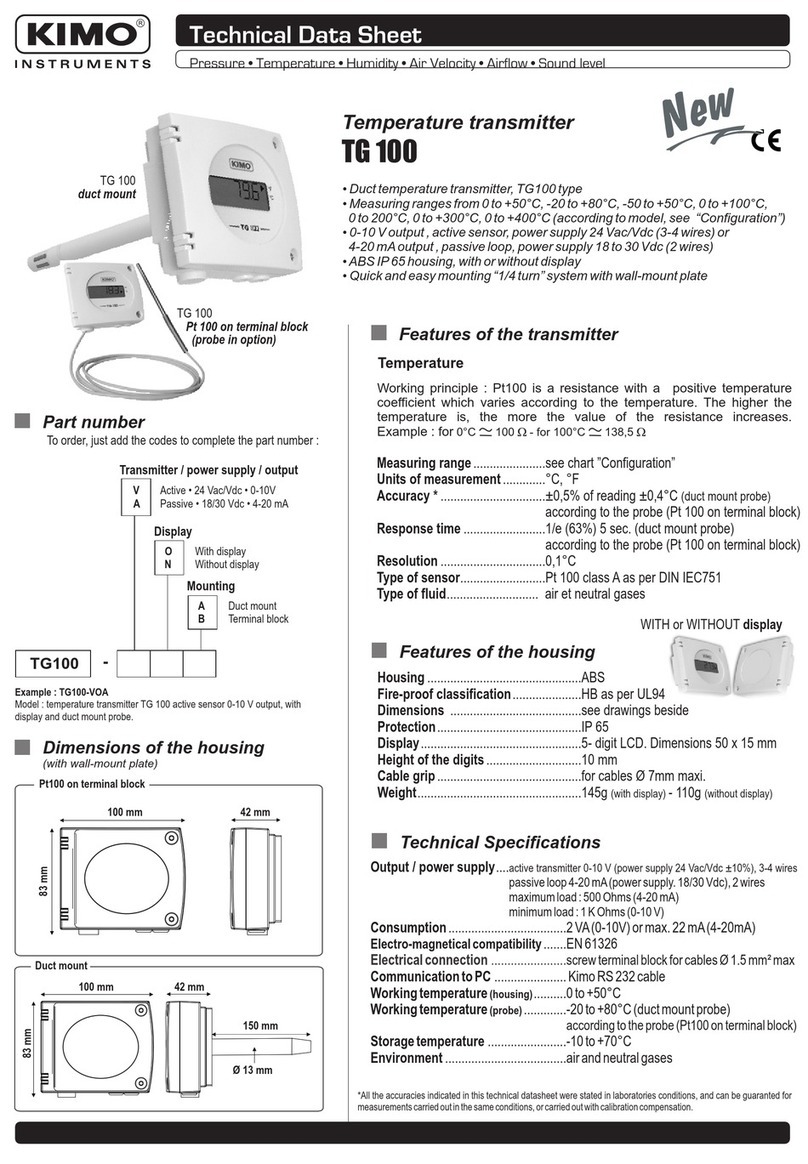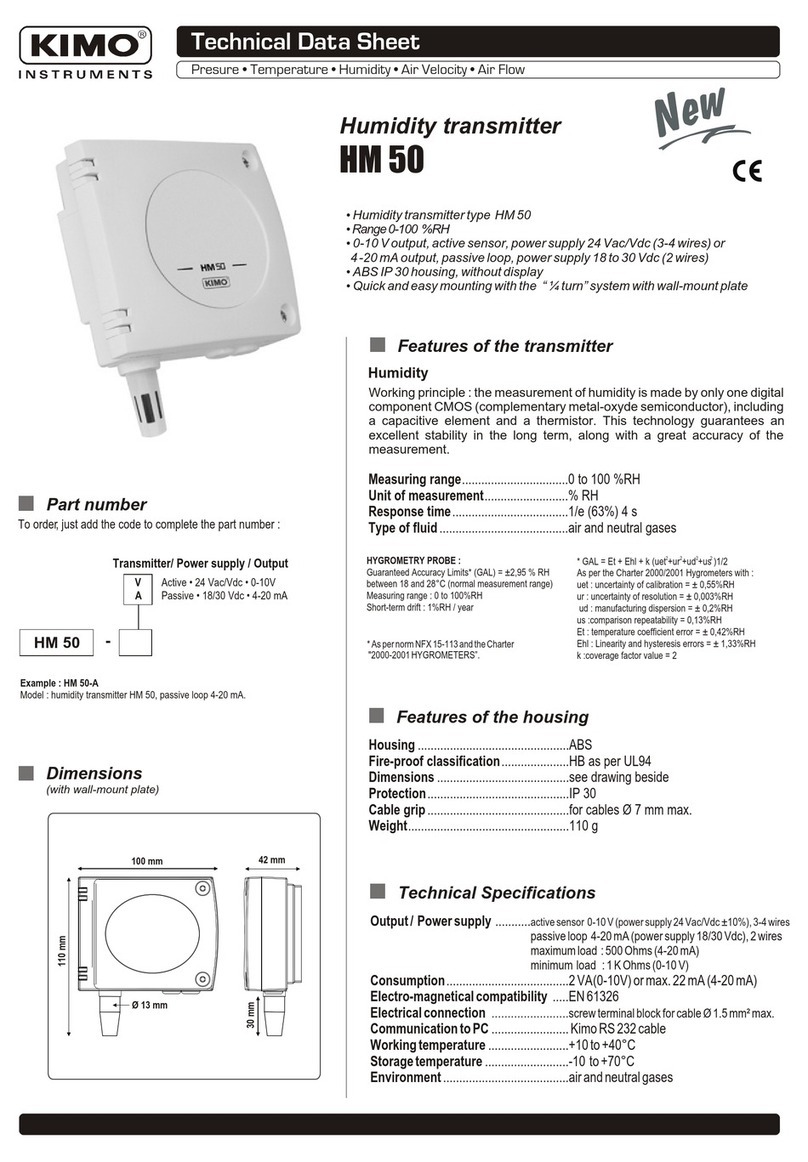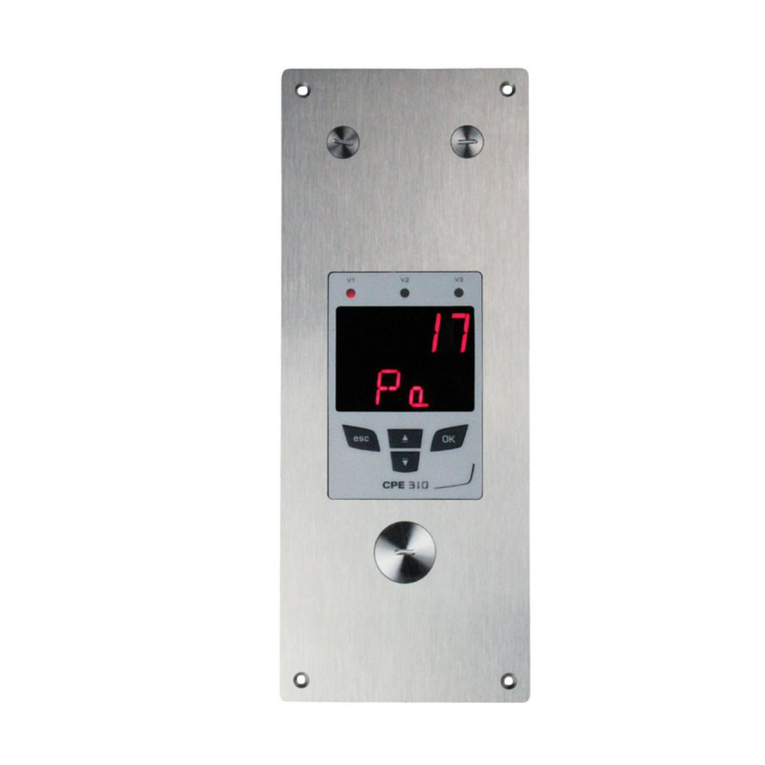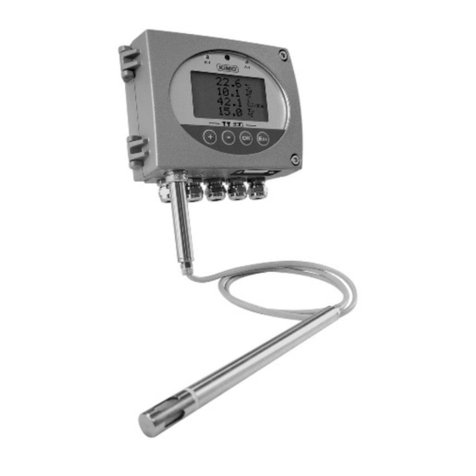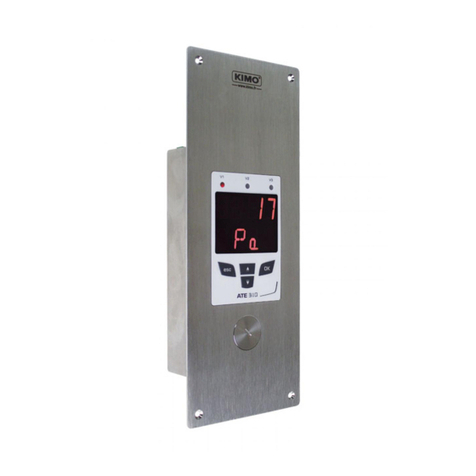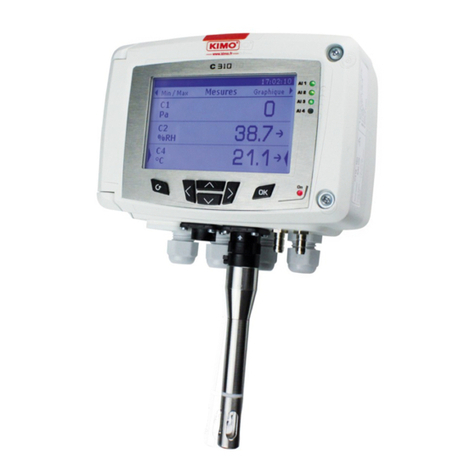Table of contents
1. Introduction..........................................................................................................................................5
1.1. Description of the transmitter.......................................................................................................5
1.2. Description of the keys.................................................................................................................5
1.3. Protection tips of the sensor........................................................................................................5
2. Modbus................................................................................................................................................6
2.1. Configuration of parameters........................................................................................................6
2.2. unctions......................................................................................................................................6
2.3. Access code to register................................................................................................................6
3. Access to the different functions.........................................................................................................9
4. 100: Configure the transmitter.......................................................................................................10
4.1. Access to the serial number: 100............................................................................................10
4.2. Access to the firmware version: 101........................................................................................10
4.3. Lock the keypad: 140..............................................................................................................10
4.4. Modify the safety code: 141.....................................................................................................10
4.5. Configure the Modbus communication (optional)......................................................................11
4.5.1 Set the slave number: 150.................................................................................................11
4.5.2 Set the speed communication: 151...................................................................................11
4.6. Activate the options....................................................................................................................11
4.7. Back to factory settings: 190...................................................................................................12
5. 200: Configuration of the channels and measurement units.........................................................13
5.1. Activate a channel......................................................................................................................13
5.2. Assign a measurement unit to a channel...................................................................................13
6. 300: Manage the analogue outputs...............................................................................................14
6.1. Set the analogue outputs...........................................................................................................14
6.2. Set the ranges of the analogue outputs.....................................................................................14
6.3. Output diagnostic.......................................................................................................................15
6.3.1 Connection configuration.....................................................................................................15
6.3.2 Perform the output diagnostic.............................................................................................16
7. 400: Manage the alarms.................................................................................................................17
8. 500: Set the pressure measurement.............................................................................................20
8.1. Perform an auto-zero.................................................................................................................20
8.2. Integration of the pressure measurement..................................................................................20
8.3. Delay times between 2 auto-zeros............................................................................................20
8.4. Add a coefficient.........................................................................................................................21
8.5. Add an offset..............................................................................................................................21
9. unctions recap and Modbus connections.......................................................................................22
9.1. 100: configure the transmitter.................................................................................................22
9.2. 200: configure the channels and the measurement units......................................................22
9.3. 300: manage the analogue outputs........................................................................................22
9.4. 400: manage the alarms.........................................................................................................23
9.5. 500: set the measurement......................................................................................................24

